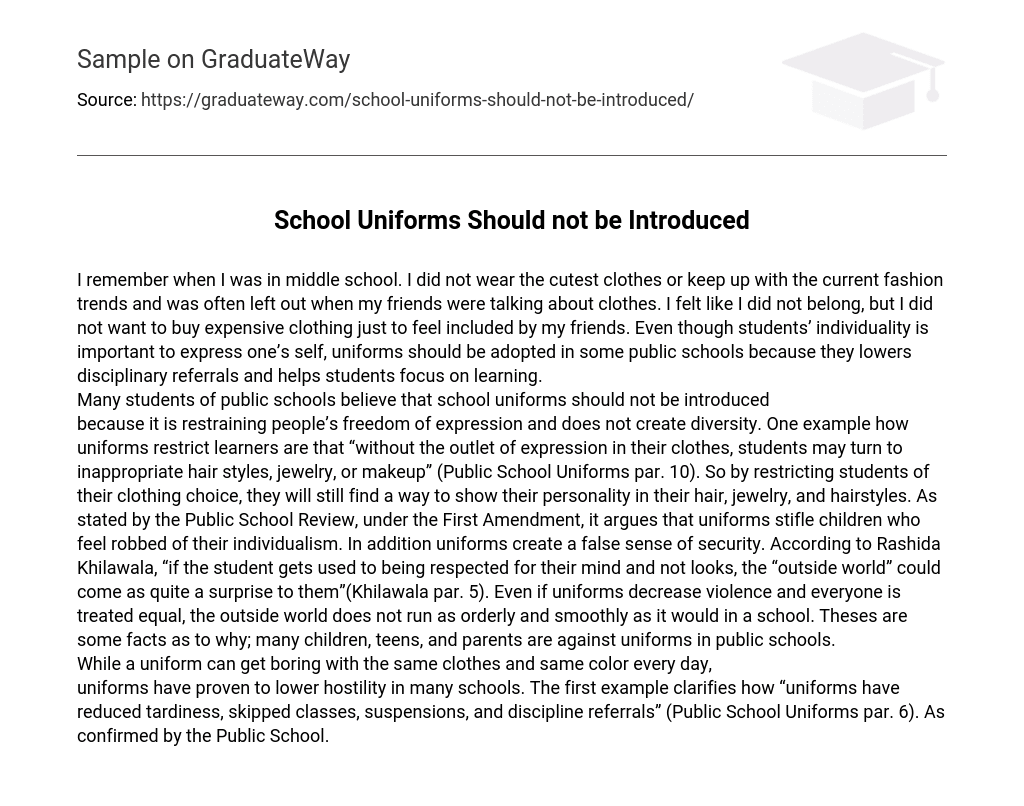I remember when I was in middle school. I did not wear the cutest clothes or keep up with the current fashion trends and was often left out when my friends were talking about clothes. I felt like I did not belong, but I did not want to buy expensive clothing just to feel included by my friends.
Even though students’ individuality is important to express one’s self, uniforms should be adopted in some public schools because they lowers disciplinary referrals and helps students focus on learning. Many students of public schools believe that school uniforms should not be introduced because it is restraining people’s freedom of expression and does not create diversity. One example how uniforms restrict learners are that “without the outlet of expression in their clothes, students may turn to inappropriate hair styles, jewelry, or makeup” (Public School Uniforms par. 10). So by restricting students of their clothing choice, they will still find a way to show their personality in their hair, jewelry, and hairstyles. As stated by the Public School Review, under the First Amendment, it argues that uniforms stifle children who feel robbed of their individualism.
In addition uniforms create a false sense of security. According to Rashida Khilawala, “if the student gets used to being respected for their mind and not looks, the “outside world” could come as quite a surprise to them”(Khilawala par. 5). Even if uniforms decrease violence and everyone is treated equal, the outside world does not run as orderly and smoothly as it would in a school. Theses are some facts as to why; many children, teens, and parents are against uniforms in public schools. While a uniform can get boring with the same clothes and same color every day, uniforms have proven to lower hostility in many schools.
The first example clarifies how “uniforms have reduced tardiness, skipped classes, suspensions, and discipline referrals” (Public School Uniforms par. 6). As confirmed by the Public School.





